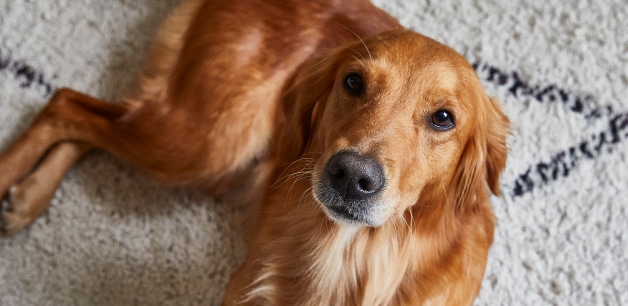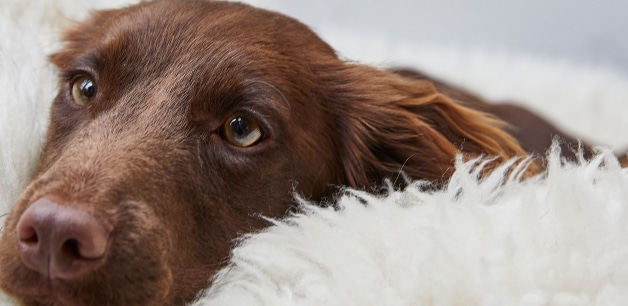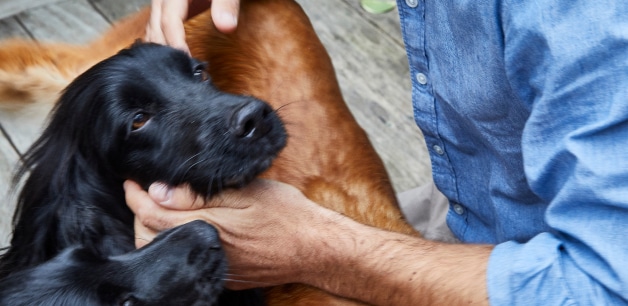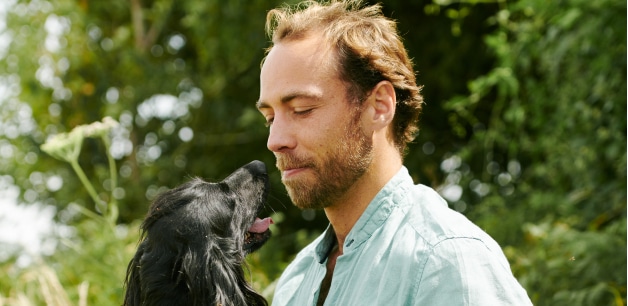The hard part: leaving them at home
I always find it so hard leaving my dogs behind, after all, they’re a part of the family. But sadly, our dogs can’t accompany us everywhere we go, and often this means leaving them at home.
Some independent dogs cope well with being left alone. Others can find it stressful, especially when we first step out and close the door, they have this particular look that fills us with guilt. You might wonder how our dogs feel during the time they’re left at home. Do dogs experience emotions like we do? Do they feel sad when we leave them, or more specifically: do they experience loneliness?
I’ve learnt so much from my pack over the years, and understanding their behaviour has helped me care for them more than I could before. This blog will aim to provide you with information about how dogs feel emotions, particularly loneliness. I hope that passing on my own experiences and knowledge will help you to understand your dog even more. This will also enhance and strengthen the bond you already have.

Are dogs emotional?
Well, as it turns out, dogs are very emotional animals. A dog’s emotional range is similar to a child’s. They can ‘tell’ us how they are feeling through body language, or by displaying certain behaviours.
Many dogs display signs of anxiety and nervousness when we leave the house, and greet us with wagging tails and excitement when we return. So it can be assumed that they must be miserable when we’re gone. However, I think it’s important to note that dogs can still feel lonely even if we are present. This is especially true if they are the only dog or animal in the household.
Although this thought might be sad, don’t worry! There are signals to look out for and even more techniques that you can use to combat loneliness.

Common signs of loneliness in dogs
There are several signs which could indicate loneliness in dogs, some of which you might have noticed but not given a second thought. All dogs are different, so whilst one dog might display all of the below signs, others might only show one. Some signs are obvious and others are subtle. Here are some of the most common signs to look out for.
Separation anxiety
This is one of the most obvious signs that your dog might feel lonely when left alone. You might notice that your dog displays destructive behaviour, or distressed vocalisation such as barking, whining or howling when you try to leave without them. Some dogs might even go to the toilet in the house, as a sign of anxiety.
Repetitive licking
Usually, licking can be taken as a sign that your dog loves you! However, when licking either themselves, you or other objects becomes excessive, this can mean that they might be feeling anxious. If your dog shows this behaviour just before or after you leave them at home alone, it could be a sign of separation anxiety and loneliness while you’re out.
Following you around
Some dogs follow their owners around the house constantly. Some might even sit outside the bathroom door whining! Dogs with separation anxiety or loneliness issues often do this as they are scared of being left alone. There are dogs that might do this all of the time, and others only when they sense you’re about to leave.
Reduced appetite
An anxious dog is less likely to have a normal appetite. Much like we do when we feel scared or nervous, dogs can have the same feelings, putting them off their food. For example, if you leave for work every day in the morning, your dog will soon learn that routine. Unfortunately, this might lead to them refusing their breakfast due to their anxious feelings about you leaving them.

Ways to combat your dog’s loneliness
You might have realised that your dog displays some or all of the behavioural signs of loneliness. Knowing that our dogs can experience stress and anxiety when we leave them can make us feel sad and guilty. Don’t worry, there are many ways to help make the experience easier for both of you.
Slowly introduce leaving them
A great way to get your dog used to you leaving them is to practice. Start by leaving your dog in a room, stepping out, and closing the door so they can’t see you, but can still sense you’re there. This is a useful training technique as it will introduce them to managed separation and independence. If your dog is particularly anxious, you could start with a transparent door or dog-safe baby gate, so they can still see you.
Once your dog is comfortable with you leaving the room without them, you can start leaving the house for short periods of time. You could also invest in a pet camera, to record your dog whilst you’re out. This is a handy tool, as it will allow you to assess their progress over time. Once you feel that your dog is calm and used to your absence, you can slowly increase the time that you’re gone.
Family visitors
Another way to combat loneliness in your dog is to ask a familiar person to check in on them whilst you are out for long periods of time, such as work for instance. Your dog will appreciate the visit, and it will allow them to be let outside to go to the toilet, and perhaps play a game or go for a walk. It’s important to ensure that the visitor is familiar to your dog and not a stranger, as this could cause them more stress.
Keep them busy
Mental stimulation is one of the best ways to distract your dog from anxious feelings and behaviour. You could hide a handful of their daily food allowance around the room before you leave, for your dog to sniff out. If you hide them well enough, it could keep your dog occupied for quite some time. James & Ella’s cold-pressed food is perfect for this game! You could also leave them puzzles and rotate their toys to keep them busy and engaged whilst you’re out.
Getting enough exercise
If you know that you need to leave your dog at home alone, always try to take them for a long walk beforehand. If your dog gets enough exercise, they should be sleepy. This will help them to stay calm when you leave the house, as they should be too tired to worry about being on their own.
Calming aids
If your dog has heightened anxiety, you could use a plugin dog pheromone calmer such as Adaptil, or calming spray on their bed and around your house. The pheromones can have a calming influence on your dog, which can help to reduce stress when you are out.
Additionally, I personally leave a blanket or item of clothing out for my dogs. This is a helpful trick to use, as the fabric will smell like you. This is a reminder to your dog that they don’t need to feel lonely, as your smell will be right there with them. Leaving the radio on is another effective technique that I adopt when I leave my dogs. Background noise can have a calming effect, which can help to distract them from feelings of anxiety.
Companionship
Lastly, companionship can play a role in reducing your dog’s feelings of loneliness. Dogs are known to form bonds with not just dogs, but many different animals. With careful research and planning, you could look into introducing another pet. Your dog might feel comforted with another animal companion at home with them. Check out my training tip for introducing new pets to your dog.

“A dog is the only thing on Earth that loves you more than it loves itself”
I hope the information in this blog has helped you to understand the emotions that your dog might go through on a daily basis. It’s important to remember that dogs don’t know why we have to leave them, but that’s why it’s great to offer solutions and training techniques to combat their anxieties.
I feel very lucky to have my pack of six to keep each other company when I can’t always take them with me. However, most importantly, I make sure that they all receive equal amounts of attention, as loneliness doesn’t always stem from being an only dog.
If your dog is displaying any of the above signs, it’s important to ensure that they’re safe when left alone. If you’re particularly concerned about their behaviour or wellbeing, it’s a good idea to seek help from a professional.
Remember, you are your dog’s entire world! Anything you can do to reduce potential loneliness or anxiety will have an immensely positive impact on their well-being.
James & Ella x
